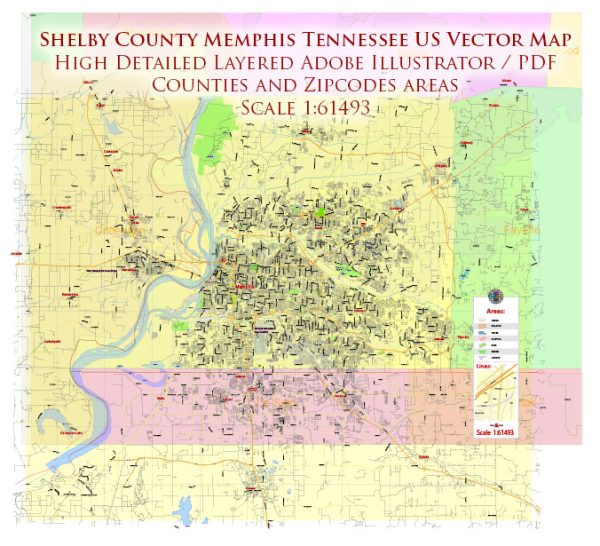The history of urban development in Memphis, Shelby County, Tennessee, is marked by a rich and complex tapestry of economic, social, and cultural factors. Here’s an overview of key points in the city’s urban development:
- Early Settlement and Cotton Economy (1819-1860):
- Memphis was founded in 1819 on the bluff overlooking the Mississippi River and quickly became a hub for cotton trading due to its strategic location.
- The cotton economy fueled the city’s growth, attracting merchants and settlers. Memphis developed as a riverfront town, with cotton warehouses and trading posts.
- Civil War and Yellow Fever Epidemics (1861-1900):
- The Civil War had a significant impact on Memphis, leading to occupation by Union forces in 1862. After the war, the city faced economic challenges.
- In the late 19th century, Memphis experienced devastating yellow fever epidemics, which led to depopulation and slowed economic development.
- Recovery and Economic Diversification (1900-1940):
- The city rebounded in the early 20th century, diversifying its economy beyond agriculture. Industries such as lumber, manufacturing, and shipping played a crucial role.
- Beale Street, a historic African American cultural and commercial hub, thrived during this period, contributing to Memphis’s unique cultural identity.
- Civil Rights Era and Urban Renewal (1940-1970):
- Memphis played a significant role in the Civil Rights Movement. The assassination of Dr. Martin Luther King Jr. in 1968 at the Lorraine Motel marked a pivotal moment in the city’s history.
- The 1950s and 1960s saw urban renewal projects, including the development of Interstate 240 and the creation of public housing. These initiatives reshaped the city’s landscape but also led to the displacement of communities.
- Post-Integration and Economic Challenges (1970-2000):
- Memphis faced economic challenges in the latter half of the 20th century, with deindustrialization affecting the city’s manufacturing sector.
- The decline of traditional industries prompted efforts to diversify the economy, with a focus on healthcare, transportation, and logistics.
- 21st Century Revitalization and Challenges:
- In recent years, Memphis has seen revitalization efforts in areas like downtown and the riverfront. The Beale Street Historic District continues to attract tourists with its vibrant nightlife and music scene.
- However, the city grapples with persistent challenges, including poverty, crime, and education disparities, which impact urban development initiatives.
Memphis’s urban development is a complex interplay of historical events, economic shifts, and social dynamics. The city continues to evolve, facing both opportunities and challenges as it strives to create a more inclusive and prosperous urban environment.


 Author: Kirill Shrayber, Ph.D.
Author: Kirill Shrayber, Ph.D.